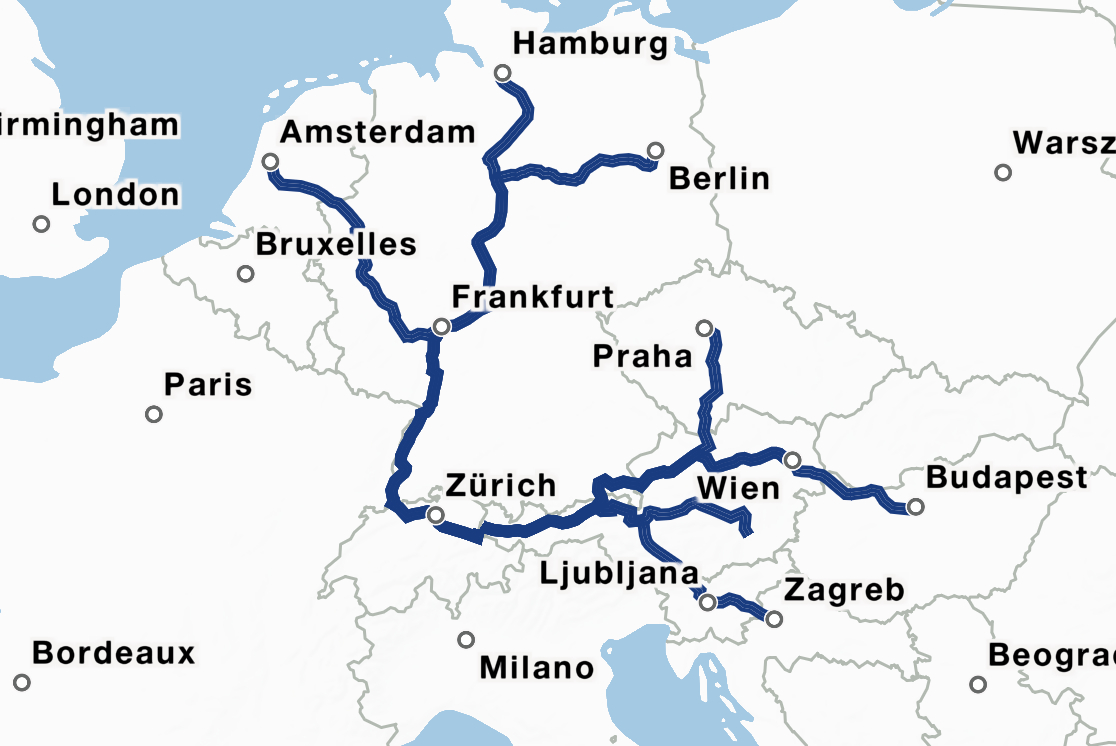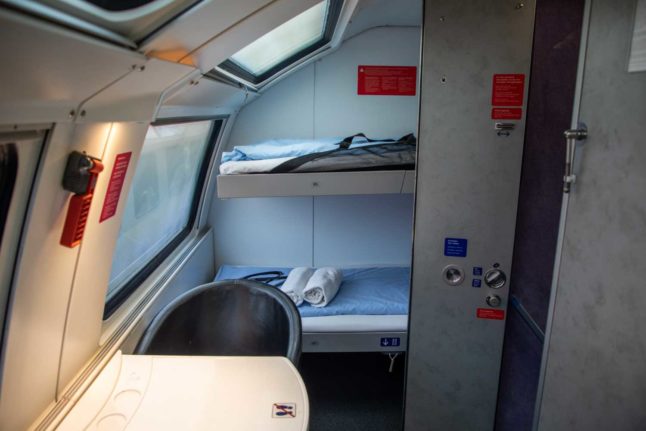Swiss Federal Railways (SBB) now hosts 11 overnight routes, including the most recently added destination – Amsterdam. And if you want to book them you’ll need to book well in advance a new report revealed.
The daily Nightjet service from Zurich to Amsterdam via Basel has been up and running since December 2021. The journey takes 11 hours and 15 minutes, leaving Zurich at 10pm and arriving in Amsterdam at 9.15am with no changes.
On the way back, the train leaves Amsterdam at 8.30pm and arrives in Basel SBB at 6.30am, travelling on to arrive in Zurich at the slightly more civilised hour of 8.05am.
Meanwhile, the much-anticipated new routes to Barcelona and Rome won’t be operational until 2024 at the earliest. The Barcelona route from Zurich will go via Bern, Lausanne and Geneva.
The SBB night train destinations are offered in collaboration with the Austrian rail company ÖBB and other partner companies. Hamburg, Berlin, Hannover, Vienna, Graz, Prague, Budapest, Ljubljana and Zagreb have been on the timetable for a few years. Most of these journeys take 10 to 12 hours.
Sleeping options
Sonya Schwaller from Fribourg recently travelled on the Zurich to Vienna night train, sleeping in a six-person compartment. She and her husband were on their way to take part in a triathlon in Bratislava. They joined the train just over the Swiss-Austrian border in Feldkirch so that they could load their car on board too.
The Schwallers took the cheaper ‘couchette’ (Liegewagen) option, which has four or six bunks and shared toilets outside in the carriage. It was their third trip by night train so they knew what to expect.

“The pillows weren’t great but we got a good blanket. Each bunk has a light so you can still read when others are asleep. It’s very quiet – nobody moving around. I slept well and I enjoyed it. They brought us coffee, bread rolls and jam in the morning.”
There is also a ‘ladies-only compartment’ in the couchette class for women travelling alone, which you have to select when booking. The most comfortable way to travel is the ‘sleeper cabin’ (Schlafwagen). There are standard and deluxe options available in this category with single, double and triple-bed compartments.
Standard sleeper compartments come with a small handbasin, while the deluxe compartments have their own shower and toilet and towels. The budget option would be to travel in reclining seats in the ‘seating carriage’ (Sitzwagen).
Booking
Regular prices range from CHF 116 one way to Prague and CHF219 to Amsterdam for a bunk in a three-person sleeper compartment. Considerably cheaper tickets (Sparbillet / Billet dégriffé / Supersaver) can be found when booking well in advance.
Not all international connections can be booked through the SBB app or the Webshop. The same applies to finding the best prices.
For the moment, SBB recommends that clients purchase international tickets at staffed travel centres or by phone (SBB Contact Center 0848 44 66 88 (CHF 0.08/Min). It’s possible to book an appointment in advance online. For more info on booking international tickets, see the SBB FAQ.
Some of the most popular routes like Zurich-Vienna and Zurich-Berlin are in demand in the busiest travel months of May to September. Early booking is recommended.
A turnaround
In December 2022 a new night train route opened linking Zurich and Prague that runs through Germany and stops in Basel, Karlsruhe and Dresden.
European railway companies see great potential in night trains and have their eye on expansion. “We are currently noticing a renaissance and strongly growing demand,” an SBB spokesman told The Local.
It’s quite a turnaround. “A few years ago, night trains were deemed to be an obsolete model. We are convinced that the demand will increase more and that night trains will also be successful in the long term in the context of sustainable travel,” he said.
In April 2023 some MPs called for more government funding of night trains, while others are more cautious.
Before investing money, “we must first ensure that this demand is long-term and not just temporary,” one deputy said.

Climate bonus
The climate benefit has become a major selling point of train travel – and night trains are even more environmentally friendly because they travel at slower speeds. On the SBB website and app, the Ecocalculator at the end of the itinerary allows you to see the CO2 savings for your trip.
A train journey can use at least 30 times less CO2 than plane travel over the same distance, and 20 times less than car travel.
There are other advantages over road travel, such as avoiding traffic jams and being able to lie down and close your eyes. There is no trouble with carrying liquids or other banned items. And there is no waiting time or airport transfer when you travel from city centre to city centre.
Long-distance train travel can be family friendly with children of the right age and temperament. It is possible to book out a four-person or six-person compartment for a group travelling together.
Sleeping in a moving vehicle may not be everyone’s idea of fun but there are ways to make it work. Comfortable clothes are a must, and potentially ear plugs or an eye mask if you’re a light sleeper.
It’s best to travel light and to have the essential things easily accessible at the top of your bag. And don’t forget to pack some tolerance for your travelling companions.



 Please whitelist us to continue reading.
Please whitelist us to continue reading.
Member comments